Art Journal as a Storybook
This week, we are looking at an art journal as a storybook, full of fairy tales that are not borrowed but our own.
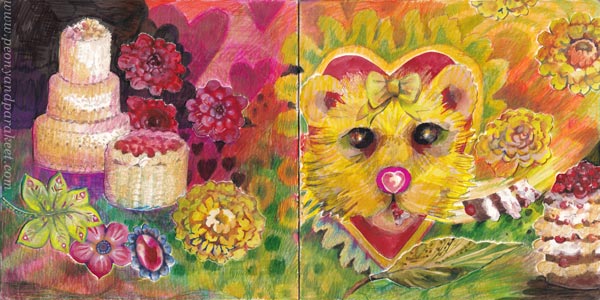
With this video, I want to inspire you to create whimsical art journal pages that illustrate personal stories. In these pages, mundane things become more fantastical, and there’s no pressure to draw realistic sceneries, real persons, and such.
I say in the video: “As a child, I drew lions without thinking if they were realistic enough. I loved lions, so I drew them, it was that simple. When I cherish the inner child, I don’t expect realistic perfection, neither do I try to control the story.”
Creating a page in your storybook journal can be a creative adventure that gets you hooked on creating.
Art Journal as a Storybook – Watch the video!
In the video, I use watercolors, colored pencils, and fel-tip pens and create a spread in my Dylusions Creative Journal. I start with creating the central heart on a separate paper ( Fabriano Accademia drawing paper, thickness 200 gsm/94 lbs), and then pick one of my boxes of joy to find more hand-drawn collage pieces.
I don’t start with the background, but glue the pieces first, and then combine them by coloring. This vice-versa collage process is fun because we can make odd images work together by drawing and also make them to tell a story.
I also like to start with a simple shape and work from a small detail to a bigger picture. I think this way of creating is exciting and adventurous, and it’s always a joy to see what comes up.
Hearts and Stories – Sign Up Now!
Let’s turn your art journal into a storybook and make the most out of simple shapes!
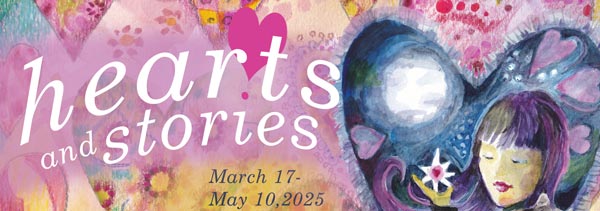
Hearts and Stories will begin on March 17, 2025. >> Sign Up Now!
Choosing the Word for 2025
Have you ever chosen the word for the new year and then happily forgotten it? Me too!
But last year, I had a word that stuck in my mind. It was “Integrate”. My word for 2025 is “Release”.
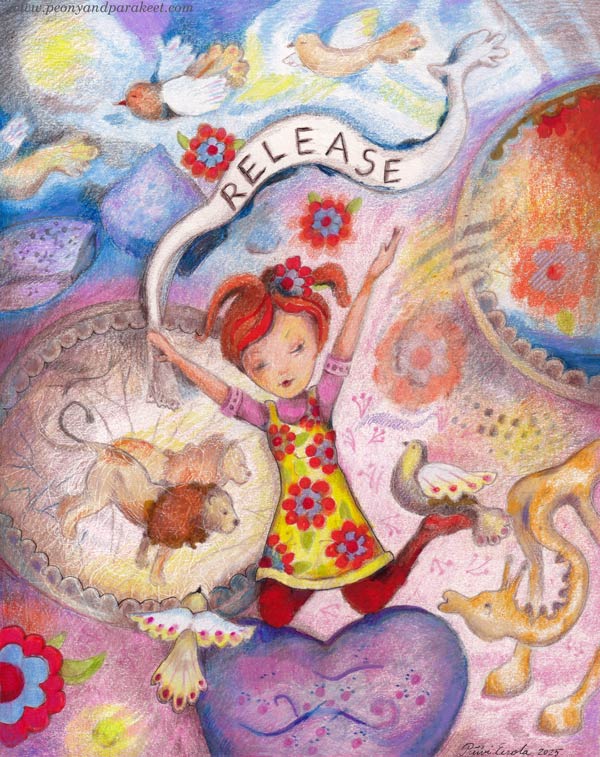
Here’s what I have learned about choosing the word!
Too Much Emotion, Too Little Impact
Some words appeal more to emotion, some to reason. Most often, I have chosen a word that has an emotional appeal. For example, “Imagination”, “Depth” or “Play“. There are plenty of these kinds of soft words, here are some common ones: “Joy”, “Courage”, “Inspire”, “Create”, “Focus”, “Nurture.”
These soft words that make your imagination run wild may seem like good choices, but they have this downside: when you’re busy working, your head is full of rational words. Emotional words don’t come to mind at that moment. This way, the practical connection to the word is missing.
My word for 2024 – “Integrate” – was a rather uninspiring word at first, but it became more and more inspiring over the course of the year. The idea was that even though I was doing a variety of art – drawing, painting and programming digital motion art – I could look for connections between different art forms so that I didn’t have to reinvent everything. I could also value more what I had created in previous years. This union of old and new worked out nicely, and with the word, I began to see my artistic career as a whole and not just an attempt to improve my artistry piece by piece.
The best thing about the word was that it didn’t describe the actual result but solved how to get there. So when I encountered problems, “Integrate” often offered at least a partial solution. That way the word came to mind repeatedly and helped me in situations when my inspiration was at its lowest.
Word That Changes Your Life
I think the best words are those that initiate change for the better. I have often chosen a word that is already familiar and doesn’t make me change anything. This year, my first candidate was “Elevate.” It sounded too soft, so I found a similar rational word “Upgrade.” But since I always try to improve my actions and the level of my art in general, I rejected “Upgrade” and chose “Release” instead.
To me, “Release” means letting go of what I’ve been holding in my heart and letting it come out. I want to give myself permission to be naive, naughty, brutal, overly cute, everything and anything, and start to blindly believe in my artistic vision. Release also means publishing what I’ve done openly and regularly and working with that in mind. Letting go and publishing is a bittersweet combination that really challenges me.
Release also means that I can let go of things if they hinder rather than help the cause.
Drawing the Word for 2025
Writing about the word is good, but I also wanted to process the word by drawing.
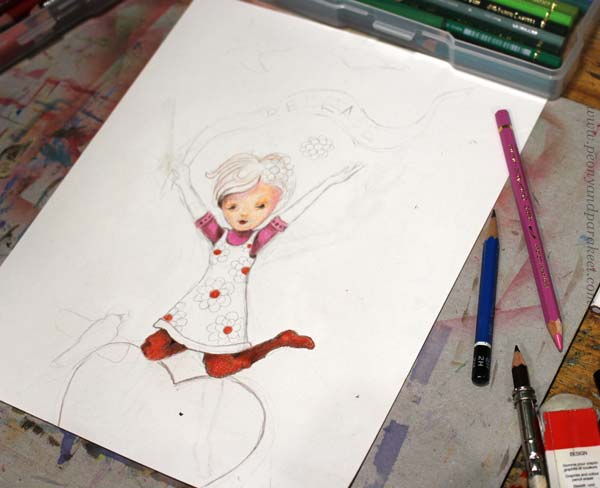
By drawing, you always find new dimensions. Even the hardest words become softer and create emotional connection.
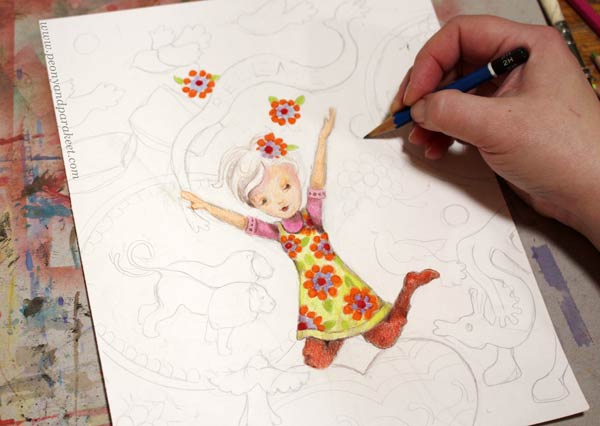
One thing leads to another. I love this way of drawing where the result remains a surprise for a long time.
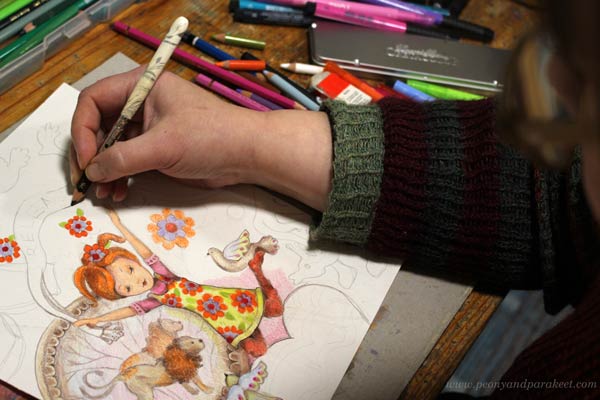
I combined colored pencils and markers here. I like the soft impression of colored pencils, but I used felt-tip pens in the highlights to intensify the colors.

When the drawing was half-finished I compared it to the little pieces I had drawn during the Christmas holiday.
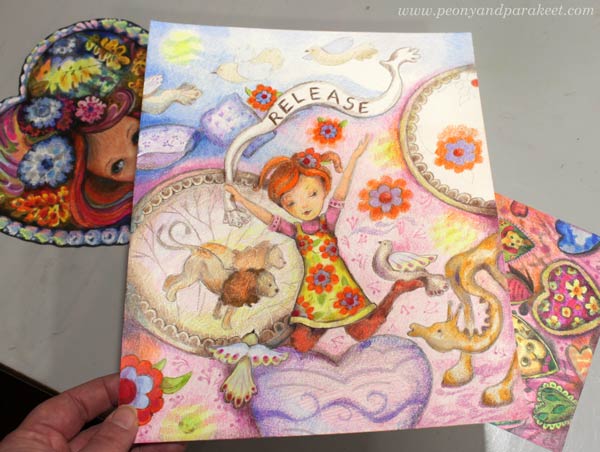
The colors still needs to be strengthened and details adjusted.
Finding the Connection with the Word
Even though this drawing isn’t very big, about letter size, there are a lot of details. I took many breaks and it took me about 3 days to finish the drawing. For the illustration that combines the right and the left brain, it’s important to find the connection between all the details and understand how they express the word.
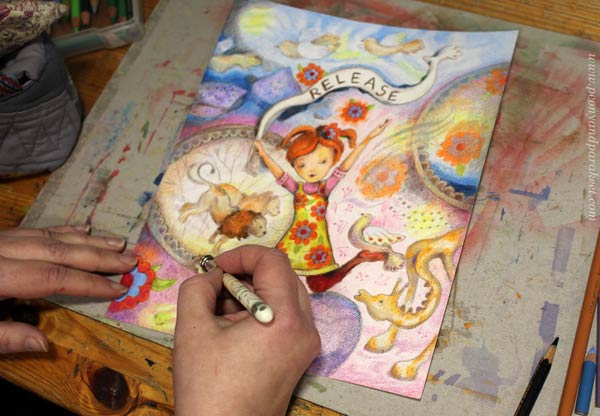
This drawing depicts my childhood in the 70s with plastic animals and daydreaming. The drawing feels revealing to me, although its style is playful.

Even if the picture feels a bit private, I want to share it with you: release, you know!
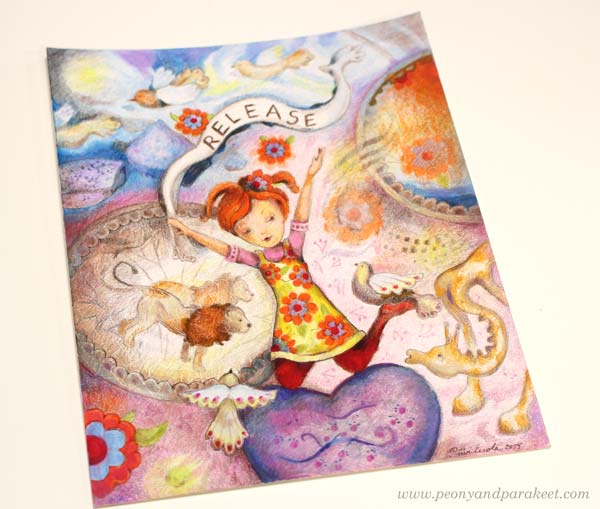
What’s your word for 2025?
Are you going to draw it?
What to Create with Colored Pencils? – Watch the Video!
This week I have a short inspirational video for you. I wanted to make a video that I can share on Instagram, so this has different portions than my videos usually are. You can watch it bigger by pressing the last icon on the menubar below the video.
Most of these drawings are made with regular colored pencils (or crayons as some call them) and some with watercolor pencils. I love both.
Coloring Freely on Blank Paper – Simple Start!
I am an advocate for coloring freely – starting with blank paper, adding colors on top of each other, and getting excited about what comes up. This doesn’t have to be anything difficult. Here’s an old picture from 2015 that I still find inspiring. You can illustrate your journaling with freely colored boxes.
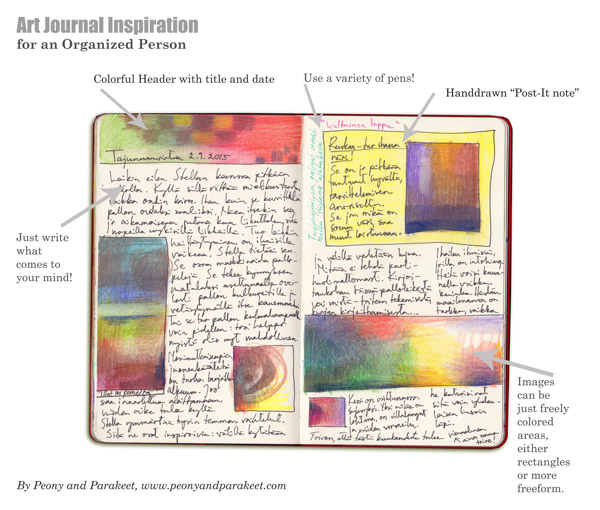
Children draw freely with colored pencils, but when they grow up and become “colored pencil artists” they need all kinds of references to get started. References are great for learning some techniques, but they don’t make anyone an artist. A big part of art is in our mind – how we open up and how we allow ourselves to break boundaries.
Growing Your Skills
My love for colored pencils is based on a promise that I have made for my inner child: I will color for you and help others to color for theirs. So even if I make oil paintings and media art too, colored pencils always have a special place in my heart.

So, welcome to my courses to improve your skills and expand your artistic thinking!
P.S. You can still sign up for Joyful Coloring!
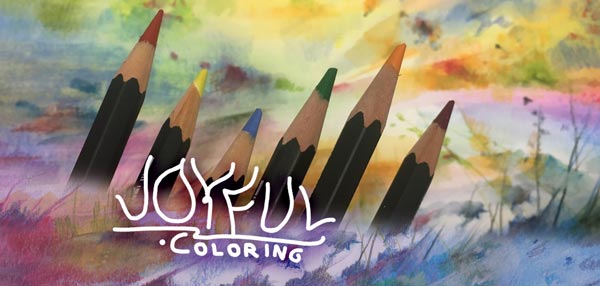
Designing Cross Stitch Patterns
This week, I have something very different than before: cross stitch!
Buy my first commercial design Primavera from my Etsy shop called Needle and Peony!
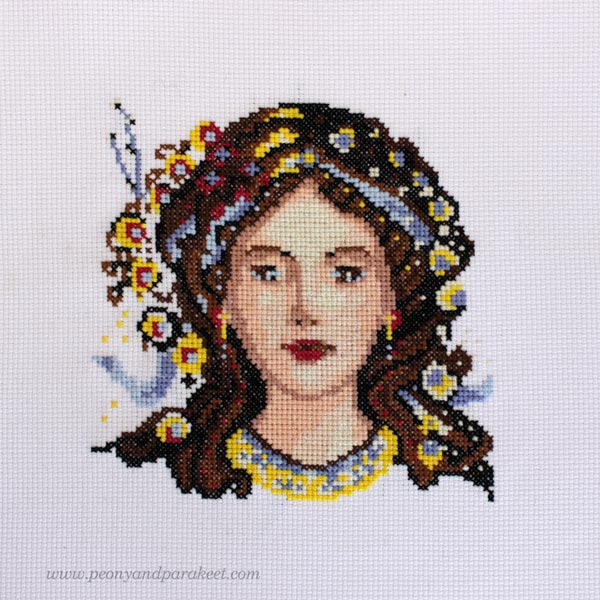
There are two main reasons for designing this pattern. The first is the need for creative play and the second that I couldn’t find anything like this from other designers: a fantasy woman’s facial portrait that wouldn’t be a huge project.
Playing and Drawing in the Stitchly App
My need for creative play comes from being very serious with art this year. I have spent a lot of time in programming computer art and I have been painting a bit too. It’s all great but I started to miss drawing, and especially, making something that is purely illustrative and not so abstract and artistically challenging.
So because I have had cross stitching as a hobby almost all my life, I bought an app called Stitchly and started drawing there – on lunch breaks and such, a few stitches at time. First I just doodled freely with the Apple pen to get to know the app.
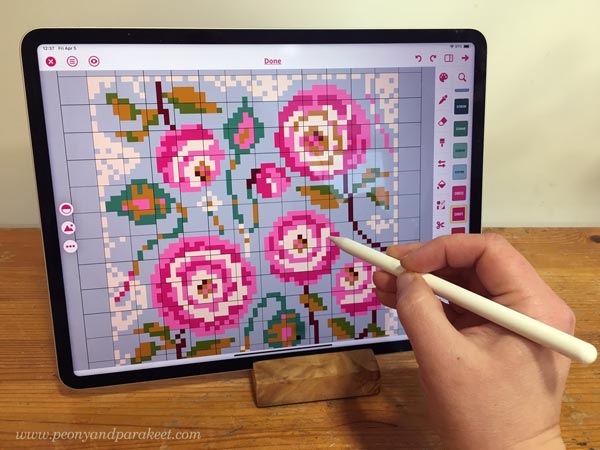
Stitchly is easy to use and with the pen, drawing is fun and the squares get filled nicely. Of course, you can also import a photo and let the app create the chart automatically. But to make the image look realistic enough, the stitch count needs to be high and the design … well I don’t think it would be a design anymore, just a pixelated photo. So, when I design, I like to draw with the pen and if I use references, I only use them as inspiration and draw every square myself.
I also like that you can have a custom palette in Stitchly. I have made a palette that has all the DMC colors from my stash, so I can also check the real color when designing.
Drawing and Stitching Faces
When people begin drawing in adulthood, they often start with faces. Eyes, mouth, nose too. Facial features create a connection to the person born on paper. It’s also fun to draw hair and add decorations there.
So, one day it hit me that even when doing cross stitches, I can get company from the character I am stitching. However, couldn’t find a cross-stitch pattern that was a reasonable size and where the character was naturally asymmetrical, but still sparked the imagination.
My stitching time is lonely time in the evening. I clean the studio if I have been painting, and then pick extra glasses and while stitching, watch other cross stitchers’ videos on Youtube, so Flosstube as we cross stitchers call the channels.
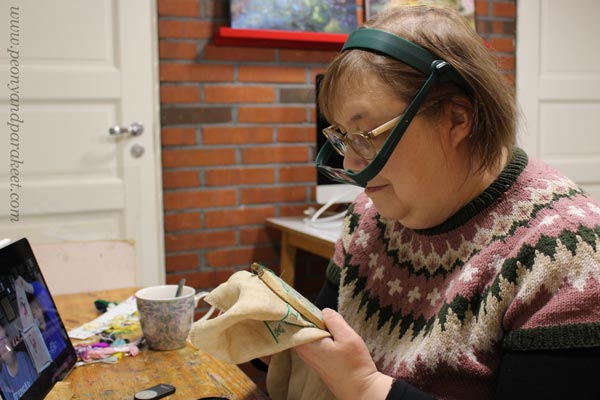
So when I wanted to stitch a facial portrait of an imaginary person, I decided to draw it in Stitchly. After making the chart, the fun started – I was stitching my own pattern!
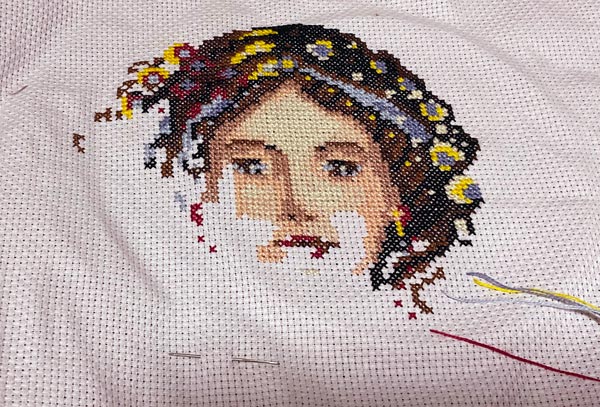
Primavera can be stitched in the colors I suggest in the pattern, but since there are only 11 colors, it’s easy to change them as you like.
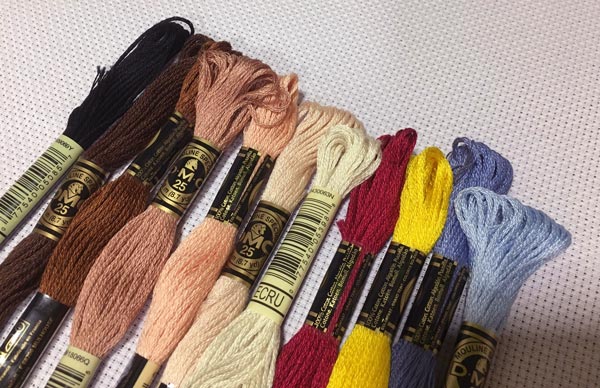
Although Primavera means spring, by changing the colors you can associate a different season or different theme with the character. The decorations are designed to be so general that they don’t limit the character you create.
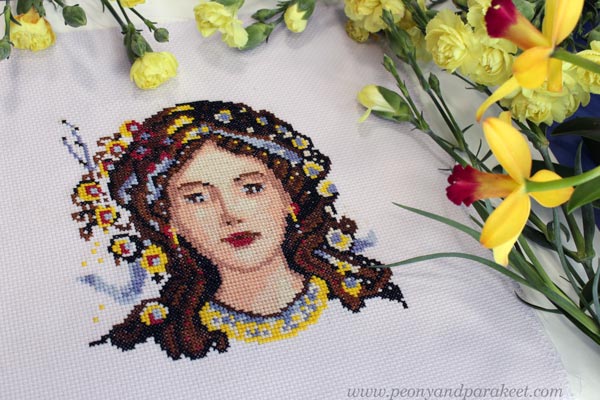
The hair has three colors of different darkness, the skin has four. The hair band has two colors close to each other. It is easy to change the accent colors of the mouth and eyes, and also the colors of the decorations.
You can buy the pattern for Primavera in my Etsy shop!
Needle and Peony
It feels nostalgic to have something on sale at Etsy again! Long before I became a full-time artist, I opened the Etsy shop called Kukkilintu, then later changed the name to Peony and Parakeet. That little shop had a major impact on my career and life. Most of my customers lived outside Finland and I started communicating more and more in English.
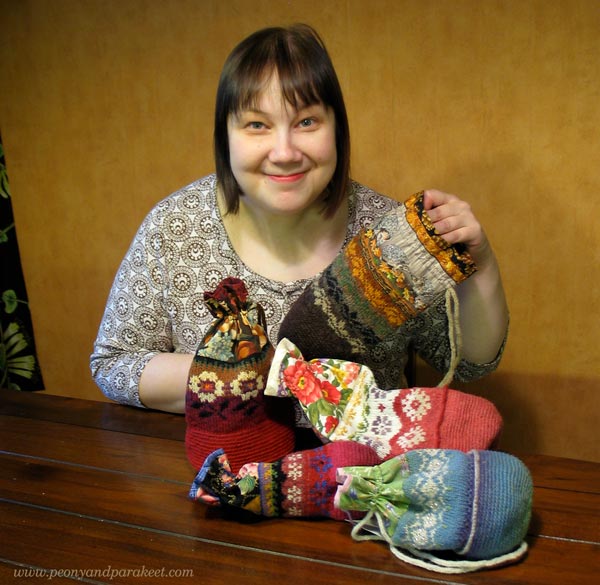
Maybe some of the current readers of this blog were my customers over ten years ago when I sold folk bags (currently available as a knitting pattern), handknitted doll clothes, hand-decorated papers and cards!
Now I changed the shop name to Needle and Peony and intend to add some charts over time. Maybe some slow stitching ideas also, as I have some of them too. Last week, I set up an Instagram account called @needleandpeony to show my cross stitch projects – also what I have stitched from other designers.
My other instagram accounts are @peonyandparakeet for fine art, @paivipeony for quilting, and @paivipioni for knitting.
Which Design Should I Do Next?
While designing Primavera, it hit me that I have a pile of drawings that I have made for classes and that could be turned into cross stitch patterns. When I browsed them, I couldn’t decide what to choose next, so I now ask you – what would you like me to design next? I have picked 5 drawings to choose from, leave a comment and let me know which one is your favorite! Which one of these would make a great cross stitch design?
A) Angel
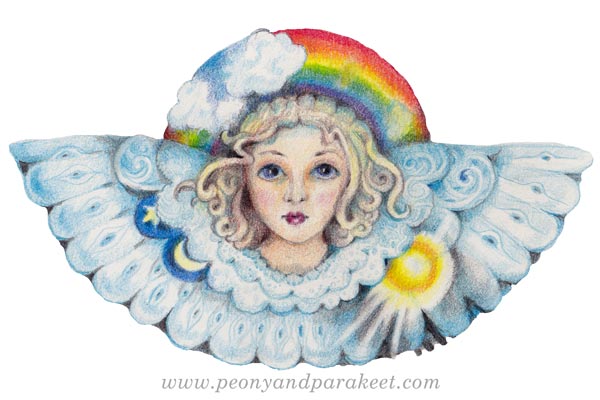
See how I drew the angel in 2022: Angel Drawing for the Inner Child
B) Girl
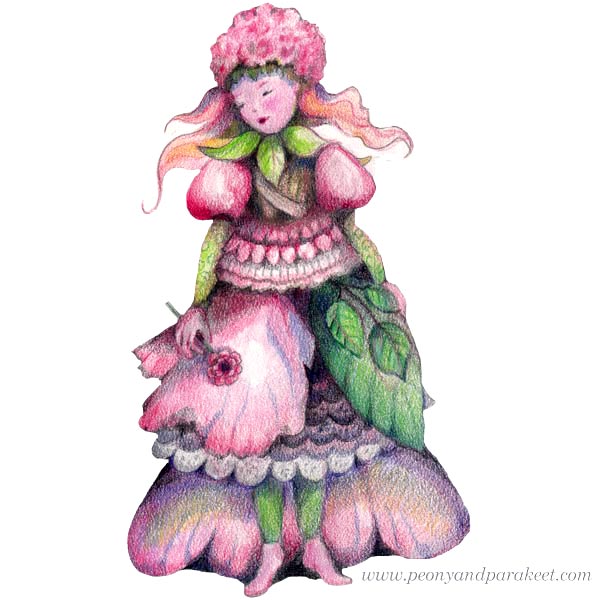
This flowel girl was drawn for the course Doll World.
C) Cat
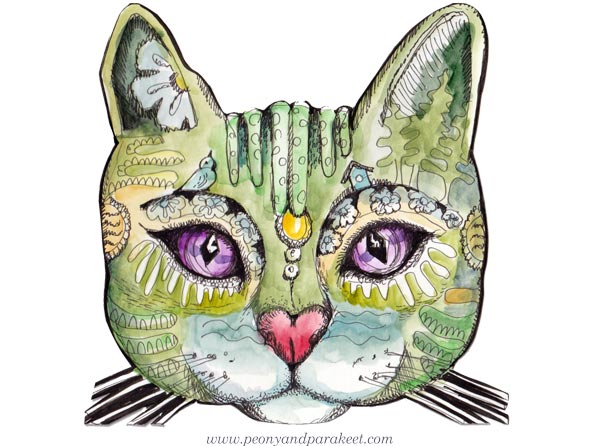
This cat was drawn for the course Magical Inkdom.
D) Leaf
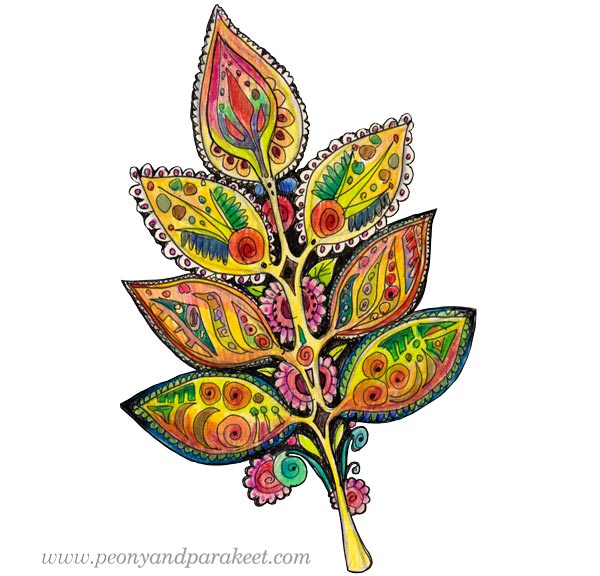
This folk leaf is an older design, from 2015. See more: Art Quilts in a Modern Way
E) Horse
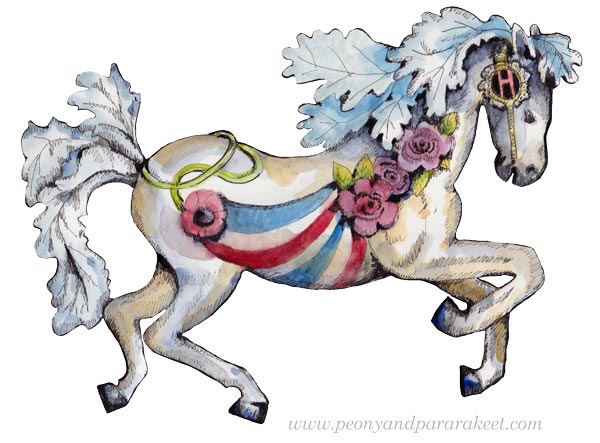
This fantasy horse was drawn for the course Magical Inkdom.
Tell me your favorite of the five – A) Angel, B) Girl, C) Cat, D) Leaf, or E) Horse?
Support me in the cross stitch design journey, here’s the link to purchase Primavera!